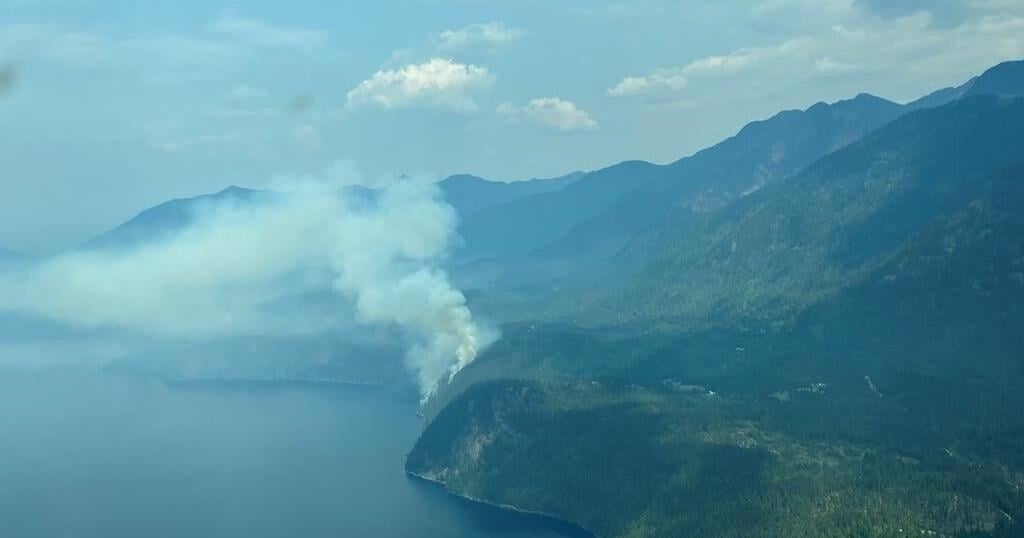The Town of Golden, B.C., says a nearby wildfire burning south of the community crossed the Columbia River and has destroyed “several structures.”
It says in a post to social media that the 1.33-square-kilometre blaze has spread north, but rain and a northern wind are expected to help the fire fight.
The BC Wildfire Service says a trend of cooler weather across much of the province has resulted in a dip in the number of fires burning for the first time in weeks, and that will allow crews an opportunity to make progress on some of the 425 active blazes.
However, the service says the number of fires of note — those that pose a threat to people or property or are highly visible — has increased to five due to the blaze near Golden.
The town’s website says authorities are focused on “saving as many structures as possible” from the Dogtooth Forest Service Road fire that has prompted evacuation orders for properties along the Columbia River as it runs beside Highway 95.
The highway is closed between Golden and Radium Hot Springs to the south, but the town says it’s likely to reopen pending a re-evaluation of the area.
More than 230 fires are now burning out of control, with a cluster in southeastern B.C., a region that has seen thousands of lightning strikes in a series of thunderstorms. The service says the region continues to be warm and dry.
In central and northern B.C., the wildfire service says rain and a break from warmer-than-usual weather are providing a much-needed respite.
In the past week, the service says at least 238 fires have been put out, and at least 124 fires have been brought under control. There were fewer than 100 fires burning on July 8.
Environment Canada is forecasting highs in the low- or mid-20s in parts of the Interior, including Kamloops, Kelowna and Lytton, where temperatures surpassed 40 C just days ago.
Temperatures in the northern Interior, including Prince George and Williams Lake, are forecast to remain in the mid-teens.
B.C. firefighters had been battling a spike in wildfires since the weekend, when dry weather and a heat wave were followed by tens of thousands of lightning strikes.
Among the most severe wildfires in the province is the 225-square-kilometre Shetland Creek blaze near Spences Bridge, which has destroyed about 20 structures in the Venables Valley, including at least six homes.
Another fire of note is the four-square-kilometre Aylwin Creek blaze south of Silverton in the Central Kootenay region, which, has triggered an evacuation order for the entire village along with 17 nearby properties.
A few kilometres to the north, a further 16 properties have been ordered evacuated outside the community of New Denver due to the Wilson Creek wildfire.
The Regional District of Central Kootenay has also upgraded an evacuation alert to an order for the Argenta and Johnsons landing areas due to the Argenta Creek blaze. The order spans 191 properties on the northeast shore of Kootenay Lake.
On Vancouver Island, the Old Man Lake wildfire burns out of control about nine kilometres north of Sooke.
That fire, at just under one square kilometre in size, has seen some growth in unsuppressed areas, but the spread has been “away from any structures or critical infrastructure,” according to Julia Caranci with the Coastal Fire Centre.
“We have not recommended any evacuation alerts or orders associated with this incident currently,” Caranci says in an update posted on YouTube.
The Capital Regional District says the fire is burning a few kilometres south of the Sooke Lake Reservoir, which is part of the water supply for about 350,000 people in Greater Victoria.
The district has enacted a number of recreational closures due to the fire, including closing Sooke Potholes Regional Park, the Spring Salmon Place Campground and the access to Kapoor Regional Park.
This report by The Canadian Press was first published July 25, 2024.

























